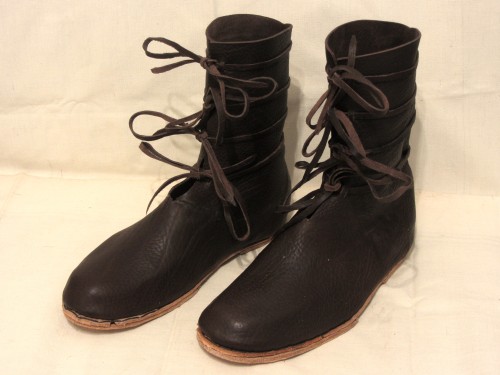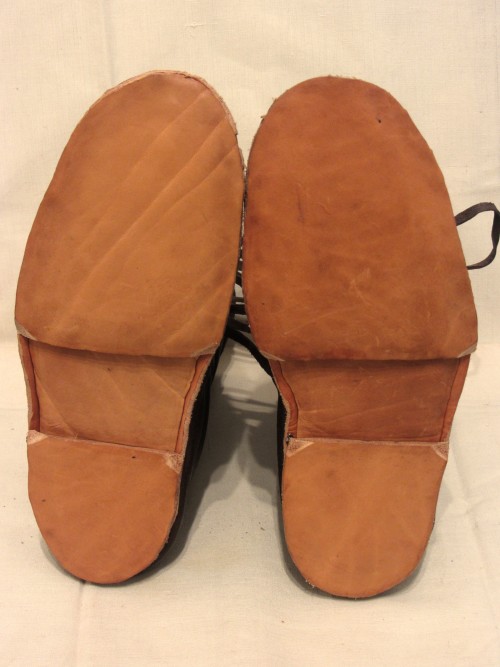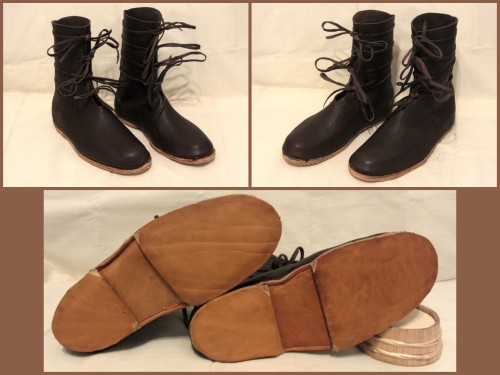Many, mostly complete, shoes have been found in abandoned mining adits in Altenberg, in Siegen-Wittgenstein in Nordrhein-Westfalen Germany, next to textile-, metal and other leather fragments. Except for one leather fragment all leather finds have been dated to around 1235 +- 6 years 1.
The special feature from the Altenberg shoes are the doubled soles at the front and the heel which where sewn to the main sole. These doubled soles have been used as an additional protection for the miner against sharp rocks2. They should not be mistaken as an additional measurement against the wear of the sole like additional inner soles found in Schleswig3 and Konstanz4 after 1200. The construction of the overall shoe is a turned shoe and should not be mistaken for a welted construction found in later periods. Doubled soles attached to welted shoes became common not before the 15th century5.
This pair is made after type RT2 from Altenberg6. It’s a simple boot made from vegetable tanned cowhide with leather straps.

Finished pair of shoes after type RT2 from Altenberg made of vegetable tanned cowhide.
As can be seen in the following picture the space between the front and the heel is not reinforced, similar to the finds from Altenberg. In my own experience a complete sole would make the whole shoe very stiff and not flexible enough for walking.

Detail view of the doubled sole.
One user from the german Mittelalterforum inspired me to arrange the photos in a small collage. That way the pictures look a lot better (or so I do believe).

Collage of the finished shoes with a detailed vie of the doubled sole.
 Adalbert Shouster
Adalbert Shouster

